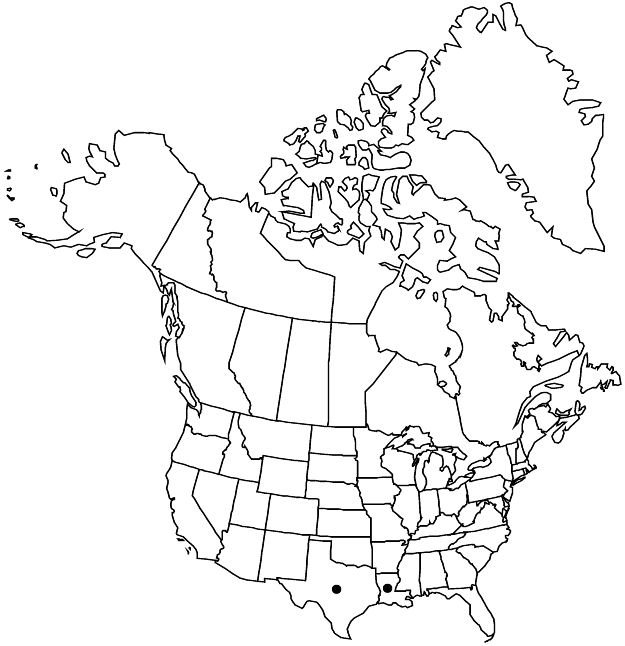Euphorbia meganaesos
Rep. (Annual) Board Supervisors Louisiana State Seminary Learning Military Acad. 1870: 71, 105. 1871.
Herbs, annual, with taproot. Stems prostrate to ascending, drooping at tips, 15–30 cm, glabrous. Leaves opposite; stipules distinct, divided nearly to base into linear-filiform segments, 1–2 mm, glabrous; petiole 0.5–1.3 mm, glabrous; blade narrowly oblong to oblong-obovate, often ± falcate, 5–16 × 1–4.5 mm, base subsymmetric to strongly oblique, margins sparsely spinulose-serrulate, apex rounded or broadly acute, abaxial surface pale grayish green, adaxial surface sometimes with reddish streak along midvein, both surfaces not papillate, glabrous; 3–5-veined at base. Cyathia solitary at distal nodes or on congested, axillary branches; peduncle 0.1–0.4 mm. Involucre obconic, 0.7–0.9 × 0.4–0.6 mm, glabrous; glands 4, green to yellow-green, subequal, oblong, 0.1–0.2 × 0.2–0.3 mm; appendages white to reddish tinged, lunate to oblong, 0.1–0.3 × 0.3–0.5 mm (2 ± 2 times longer than other 2), entire or coarsely toothed. Staminate flowers 2–5. Pistillate flowers: ovary glabrous; styles 0.2–0.3 mm, 2-fid at apex to nearly 1/2 length. Capsules ovoid, cocci not elongated nor terminating in empty portion, 1.5 × 1.7 mm, glabrous; columella 1.3 mm. Seeds reddish-brown to brown, pyramidal to oblong-ovoid, weakly 4-angled in cross-section, 0.9–1 × 0.7 mm, minutely beaded, with 3–4 broad, rounded, transverse ridges that do not interrupt abaxial keel.
Phenology: Flowering and fruiting late spring–late summer.
Habitat: Sandy beaches, edges of marshes, coastal prairies, roadsides.
Elevation: 0–10 m.
Discussion
Euphorbia meganaesos is known only from coastal areas of southern Louisiana and adjacent Texas. This species was often considered conspecific with E. maculata in the past, but it differs from that species in being entirely glabrous.
Selected References
None.
Lower Taxa
"connate" is not a number. "distinct" is not a number."connate" is not a number. "distinct" is not a number.
